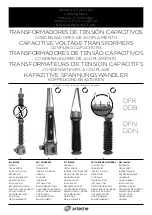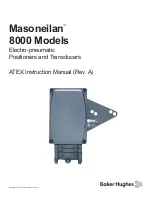
Universal transmitter 8390-1
8. TROUBLE-SHOOTING
ALMEMO
®
8390-1 transmitter can be configured and programmed in many
versatile ways. It is suitable for connecting a wide variety of very different
sensors, additional measuring instruments, and peripheral equipment. Given
these numerous possibilities the device may in certain circumstances not be-
have quite as expected. The cause of such unexpected behavior is only very
rarely a device defect; more usually it is incorrect operation by the user, an in-
valid setting, or unsuitable cabling. In such event try to pinpoint and clear the
problem with the aid of the following tests :
Error :
Measured values are incorrect.
Remedy:
Check the channel’s programming (using the AMR-Control
software); scan the entire programming using the command
P15
(s. Manual, Section 6.2.3) and
f1 P15
(s. Manual, Section 6.10.1).
Error :
Fluctuating measured values, cyclic measuring point scan hangs in
mid-operation.
Remedy:
Check the cabling for any inadmissible electrical connections;
unplug any suspicious sensors, replace with hand-held sensors in air
or phantoms (for thermocouples short-circuit A-B, for Pt100 sensors
use 100-
Ω
resistor) and check, connect sensors again one at a time
and check successively; If a fault persists for any one connection,
then check all wiring, if necessary, insulate the sensor, and eliminate
interference by using shielded or twisted wiring.
Error :
Data transmission via the interface does not function.
Remedy:
Check the power supply, switch off and then on again !
Check interface module, connections, and settings :
Are both devices set to the same baud rate and transmission mode (see Ma-
nual, Section 6.10.12) ?
Is the correct COM interface on the computer being addressed ?
Are the handshake lines DTR and DSR active ?
To check the data flow and the handshake lines a small inter-
face tester with LEDs comes in very handy; (in ready-to-operate
status the data lines TXD, RXD carry negative potential of ap-
prox. -9V and the LEDs light up green, whereas the handshake
lines DSR, DTR, RTS, CTS carry approx. +9V positive voltage
and the LEDs light up red. For the duration of data transmissi-
on the data line LEDs must flash red).
Test data transmission by means of a terminal (AMR-Control, WIN-Control,
DATA-Control, WINDOWS-Terminal) :
Check the module address and code switch position (see Section 6.3), Ad-
dress the module using its assigned device number
Gxy
(see Manu-
page 17




































